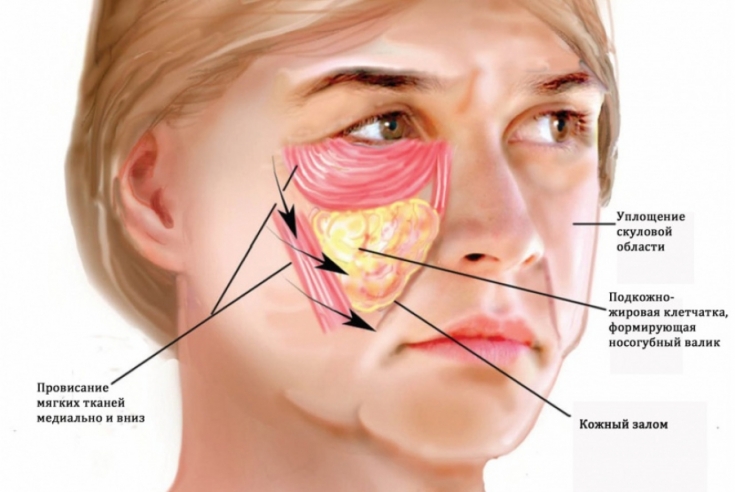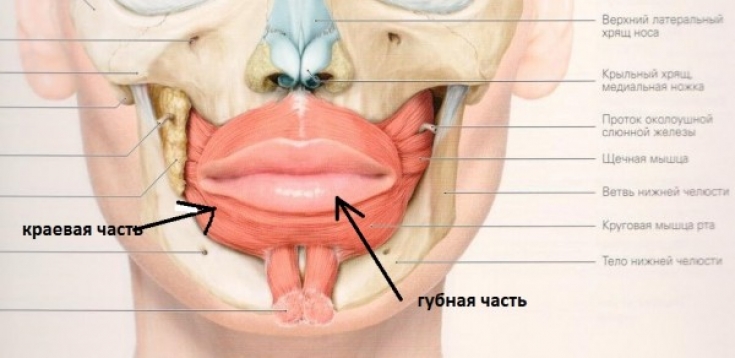The nasolabial folds are two longitudinal grooves that extend from the wings of the nose to the corners of the mouth. The deepening of these folds is one of the main signs of facial aging. Accordingly, a decrease in the severity of "nasolabial" allows you to give the face a younger and fresher look.
There are many techniques to correct this type of wrinkle, each with its own limitations. Dr. Kieren Bong talks about the 3Lift nasolabial fold filler technique.
Anatomy of the nasolabial folds and factors influencing their severityClear understanding of facial anatomy – a key aspect in the effectiveness of anti-age procedures, including those involving the introduction of fillers into the nasolabial folds. The nasolabial folds are located in the middle third of the face and run diagonally from the wings of the nose to the corners of the lips.
They deepen when you smile, because the mimic muscles – zygomatic major, zygomatic minor and levator lip – move the upper lip in the upper lateral direction. When we smile, the upper lip goes under the malar fat compartments, which protrude forward.

The nasolabial folds are absent in early childhood, but with age they become noticeable even when the face is immobile. These changes are caused by various factors, including:
- loss of facial tissue volume;
- ptosis of the malar fat compartment;
- collagen atrophy in the dermis;
- loss of skin elasticity.
Anti-age procedures: contouring of the middle third of the face.
The severity of the nasolabial folds also depends on the tonic activity of the mimic muscles, which can be clearly seen in patients with paresis of the facial nerve – they have "nasolabial" disappear.Some of the above factors can be neutralized by injecting HA-based fillers into the nasolabial folds. The following questions are discussed in more detail below:
- 3Lift technique;
- selection of patients;
- Practical Guide to Filler Injection;
- choice of filler and technique, limitations after the procedure.

One of the components of the approach to the correction of nasolabial folds is the restoration of volume in the region of the fold itself or in combination with volumization of the middle third of the face.
Contour plastic: injection of fillers into the nasolabial folds.
Dr. Bong uses the latest line of Teosyal RHA dermal fillers to address age-related dermal atrophy, which also plays a role in nasolabial folds. Restoration of contour and volume in the middle part of the face provides a lifting effect and, accordingly, allows you to "smooth out" nasolabial folds.For the 3Lift technique, a new line of dermal fillers based on hyaluronic acid – Teosyal RHA.
At the heart of 3Lift's structured approach – reduction in the severity of nasolabial folds, and the procedure protocol is drawn up individually for each patient and includes the use of one of the following products:
- RHA3 filler with lidocaine;
- RHA4 filler with lidocaine;
- PureSense Ultra Deep Lidocaine Filler.
Dublin protocol for the treatment of complications after fillers.

In practice, the unique molecular structure of RHA fillers provides excellent resistance to repeated movements of facial muscles during expression of emotions. The duration of the effect of such fillers is 6-12 months, sometimes more.
Bypassing Dangerous Zones: Optimal Filler Injection Points.
Expediency of correction of nasolabial folds with fillersWhen using RHA fillers, the following factors must be taken into account:
- the quality of the patient's skin;
- depth of nasolabial folds;
- patient waiting;
- duration of correction results;
- possible risks and contraindications.
A photo of the patient before the introduction of fillers into the nasolabial folds before drawing up a treatment plan will help to demonstrate to the patient the features of his face and explain the rationality of the chosen rejuvenation plan.
For the 3Lift technique, patients with mild to moderate nasolabial folds are suitable candidates. For patients with deep nasolabial folds and a high degree of skin laxity, it is better to recommend surgical methods of rejuvenation.
The goal of the 3Lift technique is to reduce the appearance of nasolabial folds, not eliminate them completely.Practical Guide for Nasolabial and Middle Face Fillers
The 3Lift technique uses a blunt-tipped microcannula. Features of the introduction of fillers:
- in case of slight loss of volume in the middle third of the face and low severity of nasolabial folds, the RHA3 filler is injected into the fold itself;
- in case of slight volume loss in the middle third of the face and moderate severity of the nasolabial folds, the RHA4 filler is injected into the nasolabial fold and the middle part of the face;
- in case of moderate volume loss in the middle third of the face and moderate severity, the Ultra Deep and RHA4 fillers are injected into the middle part of the face, and the RHA3 filler – into the nasolabial fold.
The RHA4 filler is injected into the superficial fat compartments, while the Ultra Deep – into deep fat compartments.
The injection points of the filler are determined depending on the severity of the nasolabial fold and the degree of volume loss in the middle third of the face. When choosing an injection site, it is important to consider the fact that restoring contour and volume in one area can improve the condition of the adjacent area.
For example, nasolabial folds can be reduced by injecting fillers into the jaw and zygomatic region, especially in patients with little to moderate volume loss and minimal or no displacement of fat compartments in the midface.
Choice of fillers and insertion technique, restrictions after the procedure
Injection of fillers into deep fat compartments provides an upward effect, while linear injection – lateral lifting.
- For deep fat pads, use the bolus technique and RHA4 or PureSense Ultra fillers.
- For superficial fat pads, use retrograde linear insertion technique and RHA filler
- For nasolabial folds, use retrograde linear insertion technique and RHA filler
The amount of product injected into each area is selected individually for the patient, taking into account:
- degrees of volume loss in the midface (with or without displacement of fat compartments);
- bone tissue structures;
- desired result;
- expressiveness of nasolabial folds.
- Deep tissue massage should be avoided for two weeks.
- Do not apply make-up until the day after the procedure.
- Avoid touching injection sites.
- If you have any problems, you should contact your doctor.
The effect of nasolabial fold correction with RHA dermal fillers lasts an average of 9-12 months.After the procedure, the patient comes for a second examination in order to evaluate the results. The effect of correcting nasolabial folds with RHA dermal fillers lasts an average of 9-12 months (this period varies depending on a number of factors).
Lipofilling of the nasolabial folds: rejuvenation with your own fat.
After 6-12 months, a second consultation is held to determine the advisability of additional correction.







Add a comment